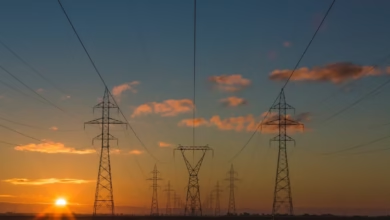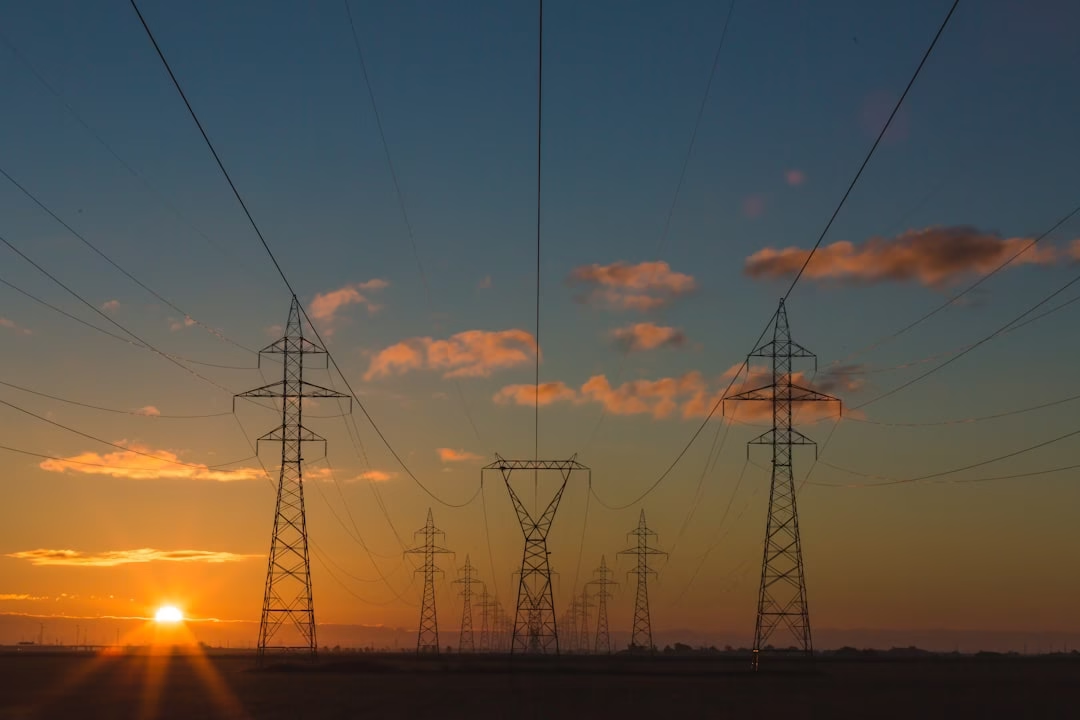Harnessing the Power of Distributed Energy: How Rooftop Solar and Smart Grids are Revolutionizing Renewable Energy Markets and Driving the Energy Transition

In an era increasingly defined by concerns over climate change and energy security, the shift towards distributed energy generation has emerged as a transformative force within the global energy landscape. Decentralized solutions, such as rooftop solar panels, are not only reshaping how energy is produced and consumed but are also paving the way for a more sustainable and resilient energy future. As traditional fossil fuels and nuclear energy sources face scrutiny, renewable energy alternatives are gaining momentum, enabling consumers to harness green energy while enhancing energy efficiency. This article explores the rise of distributed energy and its implications for energy markets, energy policy, and the broader energy transition. We will delve into how innovative strategies involving rooftop solar and smart grids can optimize energy storage and transportation, ultimately combating climate change and fostering energy security. With an eye on investment trends in energy R&D and emerging technologies like hydrogen energy and carbon capture, we aim to illuminate the critical role distributed energy plays in shaping our collective future. Join us as we navigate the complexities of energy innovations and the potential they hold for a sustainable tomorrow.
- 1. The Rise of Distributed Energy: Transforming Energy Markets with Renewable Solutions
- 2. Energy Transition Strategies: How Rooftop Solar and Smart Grids Enhance Energy Efficiency
- 3. Investing in the Future: The Role of Distributed Energy in Combatting Climate Change and Ensuring Energy Security
1. The Rise of Distributed Energy: Transforming Energy Markets with Renewable Solutions
The rise of distributed energy is fundamentally reshaping energy markets and paving the way for a more sustainable energy future. As concerns over climate change and energy security escalate, the transition from fossil fuels to renewable energy sources has become a global imperative. Distributed energy systems, such as rooftop solar panels and small-scale wind turbines, empower individuals and communities to generate their own green energy, significantly reducing reliance on centralized energy production.
These innovations not only enhance energy efficiency but also foster resilience within energy markets. With advancements in energy storage technologies, customers can now store excess energy produced during peak sunlight hours for use during periods of high demand or low generation. This capability mitigates the volatility associated with fossil fuels and bolsters energy security, particularly in regions vulnerable to supply disruptions.
Moreover, the integration of smart grids allows for improved energy transportation and management, facilitating a more efficient distribution of renewable energy. As energy policy evolves to support decentralized energy solutions, we are witnessing a surge in energy investments aimed at developing offshore energy, hydrogen energy, and bioenergy projects.
Global energy trends indicate a robust shift towards thermal energy and hydropower as viable alternatives, further diversifying the energy mix. The need for carbon capture technologies is also becoming crucial as we seek to balance energy imports and exports while reducing greenhouse gas emissions.
As electric vehicles gain popularity, the demand for innovative energy solutions continues to rise, propelling energy R&D efforts and fostering a culture of energy innovation. This energy transition marks a significant departure from traditional energy economics, urging stakeholders to rethink energy strategies and explore sustainable pathways that prioritize renewable energy as the backbone of our future energy landscape.
In summary, the rise of distributed energy is not just a trend; it is a transformative movement that is redefining energy markets and aligning them with the global commitment to combat climate change and achieve energy sustainability.
2. Energy Transition Strategies: How Rooftop Solar and Smart Grids Enhance Energy Efficiency
The transition to a sustainable energy future is rapidly gaining momentum, driven by the need to enhance energy efficiency and reduce reliance on fossil fuels. Rooftop solar panels and smart grids play a pivotal role in this energy transition, enabling communities to harness renewable energy sources while optimizing energy consumption.
Rooftop solar power systems allow homeowners and businesses to generate their own electricity, significantly reducing their dependence on traditional energy sources such as fossil fuels and nuclear energy. By adopting solar power, individuals can contribute to energy security and lower their carbon footprint, aligning with global energy trends focused on mitigating climate change. Furthermore, the decentralized nature of rooftop solar aligns with distributed energy models, which emphasize local energy generation and consumption.
Complementing rooftop solar systems, smart grids enhance energy efficiency by integrating digital technology into the energy transportation system. These grids allow for real-time monitoring and management of energy use, facilitating better demand response strategies and reducing energy waste. Smart grids can also support the integration of energy storage solutions, which are essential for balancing supply and demand, especially when using intermittent renewable sources like solar and wind energy.
As energy markets evolve, the combination of rooftop solar and smart grids not only promotes green energy but also drives investments in energy innovations. Such investments are crucial for advancing energy R&D, which explores new technologies like hydrogen energy and carbon capture. By fostering these innovations, we can improve energy economics and create a more resilient energy infrastructure.
Moreover, the deployment of rooftop solar and smart grids can lead to lower energy imports and enhanced energy exports, contributing positively to national energy policy objectives. Countries around the world are recognizing the importance of diversifying their energy portfolios, with a growing emphasis on renewable sources such as hydropower and bioenergy as well.
In conclusion, the integration of rooftop solar panels and smart grids represents a significant step toward achieving greater energy efficiency. By leveraging these technologies, we can cultivate a cleaner, more sustainable energy landscape that addresses the pressing challenges of climate change and energy security.
3. Investing in the Future: The Role of Distributed Energy in Combatting Climate Change and Ensuring Energy Security
The urgency of addressing climate change has never been more critical, and distributed energy systems are emerging as a pivotal solution in this fight. Investing in decentralized energy generation, such as rooftop solar panels and wind energy, can significantly reduce reliance on fossil fuels and enhance energy security. By harnessing renewable energy sources, communities can collectively contribute to a cleaner and more sustainable future.
Distributed energy promotes energy efficiency and empowers individuals to become active participants in energy markets. As more households adopt solar power, they not only decrease their carbon footprint but also bolster energy independence. This shift is vital as countries navigate the complexities of energy imports and exports, striving for energy security amid fluctuating global energy trends.
In addition to solar and wind, the role of energy storage technologies cannot be understated. Advanced battery systems and energy innovations such as hydrogen energy and thermal energy storage can effectively manage the intermittent nature of renewable sources. These technologies ensure a reliable supply of green energy, even when generation is low, thereby supporting the transition away from traditional energy sources like nuclear energy and fossil fuels.
Furthermore, smart grids are essential for integrating distributed energy into the existing energy infrastructure. They facilitate efficient energy transportation, enhance energy economics, and support energy R&D initiatives aimed at improving system resilience. The advent of electric vehicles also presents an opportunity to utilize distributed energy resources, as these vehicles can act as mobile energy storage units, feeding energy back into the grid during peak demand.
As nations adopt progressive energy policies that favor distributed energy systems, we witness a significant shift in energy investment towards sustainable practices. Such investments not only combat climate change but also create jobs and stimulate economic growth in emerging energy sectors like bioenergy and hydropower.
In conclusion, distributed energy represents a fundamental component of the energy transition needed to tackle climate change effectively. By prioritizing renewable energy sources and supporting strategic energy innovations, we can pave the way for a more resilient and sustainable future, enhancing both energy security and environmental stewardship.
In conclusion, the shift towards distributed energy systems represents a pivotal moment in the evolution of our energy markets. As we witness the rise of renewable energy technologies like rooftop solar panels and smart grids, the transformation of energy dynamics becomes increasingly evident. This decentralized approach not only enhances energy efficiency but also plays a crucial role in combating climate change and ensuring energy security.
Investing in distributed energy solutions is essential for a sustainable future, as it enables us to reduce our reliance on fossil fuels, nuclear energy, and other traditional forms of energy generation. With advancements in energy storage, carbon capture, and innovative energy R&D, we are better equipped than ever to embrace green energy alternatives, including wind energy, hydropower, and bioenergy.
Moreover, as global energy trends shift towards sustainable practices, energy policy must adapt to support this transition. By fostering energy innovations and promoting energy imports and exports, nations can enhance their energy economics and resilience against climate-related disruptions.
Ultimately, the journey towards a decarbonized future is not just a necessity but an opportunity. By harnessing the potential of distributed energy systems, we can pave the way for a more sustainable, efficient, and secure energy landscape, ensuring a better world for generations to come.
References:
(Include relevant citations and sources here)





